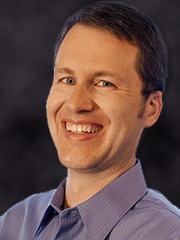On a mountainside in Southern France lies the quiet, picturesque French village of La Turbie. Rising above the red pottery roofs in that small community is the magnificent Tropaeum Alpium (“Trophy of the Alps”). The white limestone structure communicates strength like the mountain it dominates as it juts into the skyline above the Mediterranean Sea. The ruins of the monument are a beautiful sight worth the trip off the main tourist routes.
 Brian KaylorBuilt around the same time as the birth of Jesus, the monument celebrated the victory of Caesar Augustus over the tribes in the Alpine region a decade earlier. It stands at the highest point on what was then a new Roman road linking Rome with southern France and Spain. The Trophy did not function as a military structure or a mausoleum, but instead served solely to celebrate Augustus’s power — and remind the local Alpine people of who now ruled the area. It was also constructed in an area associated with Hercules, a Roman demi-god praised for his strength, therefore also building on the tradition of deifying Roman emperors by connecting Augustus with the cult of Hercules.
Brian KaylorBuilt around the same time as the birth of Jesus, the monument celebrated the victory of Caesar Augustus over the tribes in the Alpine region a decade earlier. It stands at the highest point on what was then a new Roman road linking Rome with southern France and Spain. The Trophy did not function as a military structure or a mausoleum, but instead served solely to celebrate Augustus’s power — and remind the local Alpine people of who now ruled the area. It was also constructed in an area associated with Hercules, a Roman demi-god praised for his strength, therefore also building on the tradition of deifying Roman emperors by connecting Augustus with the cult of Hercules.
Near the same time Augustus built the monument celebrating his military, political and religious might, the Roman leader did something else. As the gospel writer Luke explained, “In those days Caesar Augustus issued a decree that a census should be taken of the entire Roman world.” Wars, roads and monuments are expensive, so perhaps Augustus needed to collect more taxes.
What Luke does not tell us — but would have known himself — is that many of the terms that appear in his narrative about Jesus’s birth and in the rest of the book are terms Augustus already employed about himself or his work. Son of god. Lord. Savior. Messiah. Good News. Kingdom. In fact, the inscription on that monument in La Turbie refers to Augustus as “son of the divine.”
As Luke put the birth story in context of Augustus on the throne, the famous words from the angel to the shepherds carry a more potent meaning: “I bring you good news that will cause great joy for all the people. Today in the town of David a Savior has been born to you; he is the Messiah, the Lord.”
If Jesus is Savor, Messiah and Lord, then Augustus is not. If Jesus if the one who brings good news, then Augustus is not. No wonder the Romans killed Jesus as “king of the Jews,” viewing him as a threat to Roman rule.
Yet, the Kingdom of Jesus looks quite different from that of Augustus. And the Prince of Peace brings a different kind of peace than the brutal, subjugating violence of Pax Romana (a Latin phrase describing the “Roman Peace” that started during the reign of Augustus).
While Augustus had the magnificent Trophy of the Alps built — probably with the “help” of recently-enslaved Alpine people — and many other monuments, temples and grand buildings, Jesus showed up in a dirty, old trough for smelly animals. At the very time that Augustus lived in decadence, Joseph and Mary took the baby Jesus to Egypt, fleeing as refugees from a bloody tyrant who served under Augustus. While Augustus killed his political enemies in a never-ending quest to gain and maintain more power, Jesus left his throne and offered himself as a sacrifice for others.
Today the kingdom of Augustus lies in ruins, as does his monument in the Alps. After the Roman Empire collapsed in the 5th century, invaders damaged the monument, and then Christian monks destroyed the statues because of their pagan nature. While the monument lies partially destroyed as a tourist site, a nearly 300-year-old church nearby continues to hold worship services.
As we celebrate Christmas, let us not overlook the radical message it proclaims. The second chapter of Luke starts with a reference to the reign of Augustus and then announces the arrival of the true Savior. Jesus did not build monuments to himself. We are those monuments. We are the ones proclaiming the Good News. Not by conquering others like Augustus did, but by living like the Prince of Peace.
Brian Kaylor is editor & president of Word&Way.
